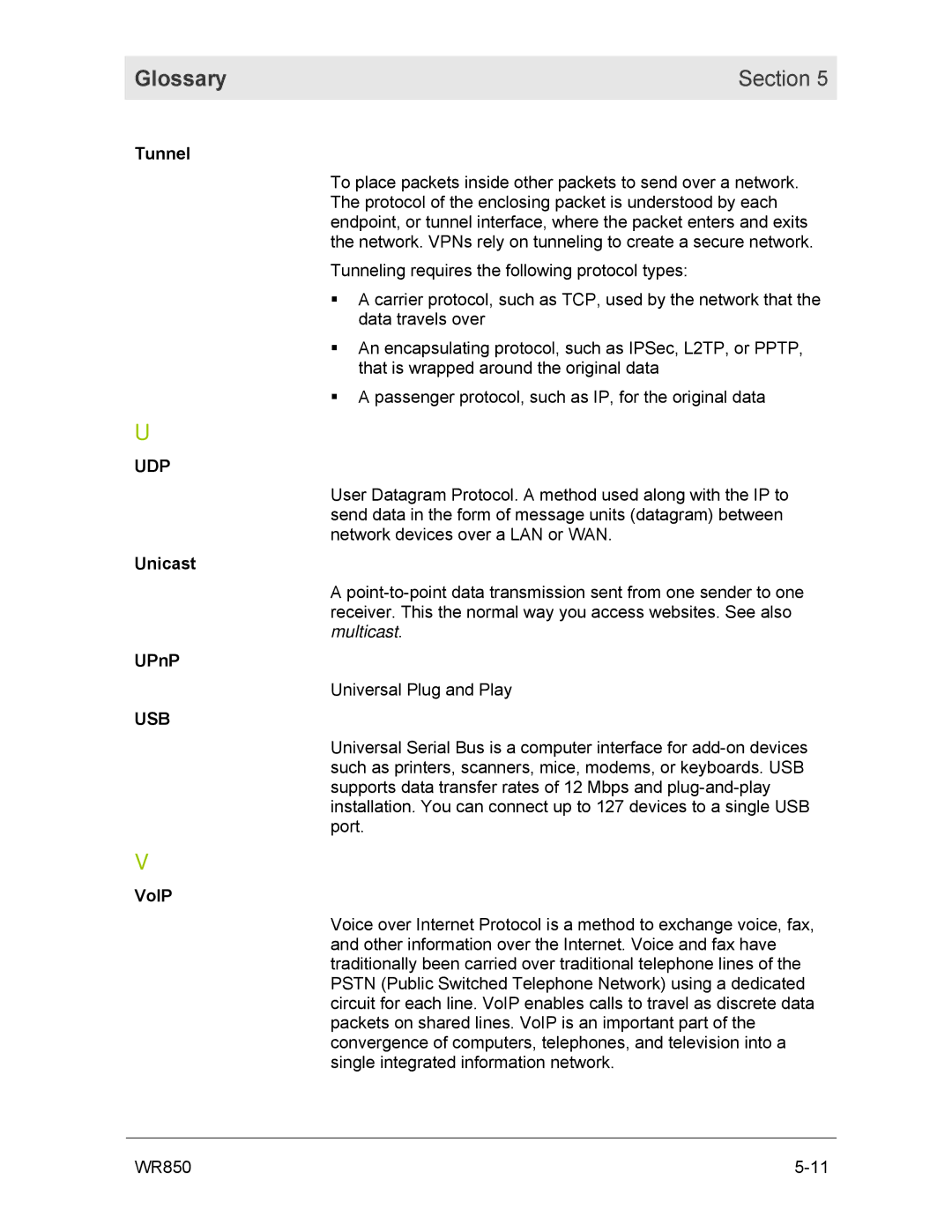Glossary | Section 5 |
|
|
Tunnel
To place packets inside other packets to send over a network. The protocol of the enclosing packet is understood by each endpoint, or tunnel interface, where the packet enters and exits the network. VPNs rely on tunneling to create a secure network.
Tunneling requires the following protocol types:
A carrier protocol, such as TCP, used by the network that the data travels over
An encapsulating protocol, such as IPSec, L2TP, or PPTP, that is wrapped around the original data
A passenger protocol, such as IP, for the original data
U
UDP
User Datagram Protocol. A method used along with the IP to send data in the form of message units (datagram) between network devices over a LAN or WAN.
Unicast
A
UPnP
Universal Plug and Play
USB
Universal Serial Bus is a computer interface for
V
VoIP
Voice over Internet Protocol is a method to exchange voice, fax, and other information over the Internet. Voice and fax have traditionally been carried over traditional telephone lines of the PSTN (Public Switched Telephone Network) using a dedicated circuit for each line. VoIP enables calls to travel as discrete data packets on shared lines. VoIP is an important part of the convergence of computers, telephones, and television into a single integrated information network.
WR850 |
